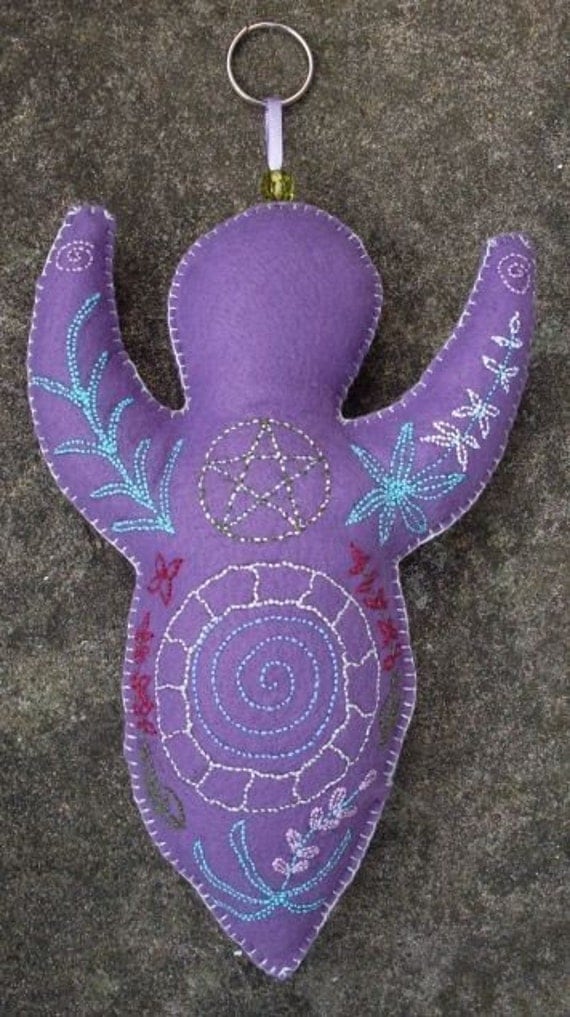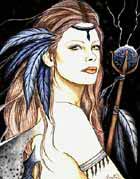- Thor-Norse God of Thunder. [Google]. Mythical Realm, Available from: http://www.mythicalrealm.com/legends/thor.html [1998-2010]
- Goddess of the Growing Green: Airmid of Ireland. [Google]. Erynn Rowand Laurie, Available from: http://www.seanet.com/~inisglas/airmid.html [2010]
- Airmid Goddess. [Google]. Esty, Available from: http://www.etsy.com/listing/59534714/airmid-goddess [2011]
- Celtic Goddess Airmid. [Google]. Gaelyn Bram, Available from: http://uniquecelticjewelry.com/celtic_goddess_airmid.html [2007-2010]
- Thor. [Google]. Micha F. Lindemans, Available from: http://www.pantheon.org/articles/t/thor.html [1997-2006]
Tuesday, April 5, 2011
Bibliography:
Celtic Goddess of healing- Airmid
 Airmid was the Goddess of healing, learning, magic and herbalism. She is daughter the surgeon of the Gods, Dian Cecht and was said to be one of the wisest Goddess. She based her magic on the healing of humans and bringing them good health. She would heal the dead warriors and help the sick to become healthy. When images of Airmid appear she is is seen to be a strong wiled woman, with long brown hair and who dresses to the blending of her surroundings. She wears handmade objects made out of the trees and wears on her a cloak. When people invoke her spirit they seek guidance from her and ask that her knowledge help them to pass through troubled times. In modern times, the Celtic have created a symbol of Airmid that they can hold with them to help them to receive the guidance and protection from Airmid. This figure is made out of purple fabric, stitched together by silver thread, attached to it a stone from the healing waters, surrounded by rosemary, thyme, basil and lavender. The figure is said to bring peace and protection to the bearer and will always contain the spirit of Airmid within it. She has taught the Celtic people the secret to the healing by herbs and gives them the knowledge of using them to help each other.
Airmid was the Goddess of healing, learning, magic and herbalism. She is daughter the surgeon of the Gods, Dian Cecht and was said to be one of the wisest Goddess. She based her magic on the healing of humans and bringing them good health. She would heal the dead warriors and help the sick to become healthy. When images of Airmid appear she is is seen to be a strong wiled woman, with long brown hair and who dresses to the blending of her surroundings. She wears handmade objects made out of the trees and wears on her a cloak. When people invoke her spirit they seek guidance from her and ask that her knowledge help them to pass through troubled times. In modern times, the Celtic have created a symbol of Airmid that they can hold with them to help them to receive the guidance and protection from Airmid. This figure is made out of purple fabric, stitched together by silver thread, attached to it a stone from the healing waters, surrounded by rosemary, thyme, basil and lavender. The figure is said to bring peace and protection to the bearer and will always contain the spirit of Airmid within it. She has taught the Celtic people the secret to the healing by herbs and gives them the knowledge of using them to help each other.
The people have come to honor Airmid so much that during her worship by the people they created alters in her name. These alters held within them all of the herbs known in the world, a piece of cloth to represent her cloak and a bowl of spring water to represent her and her families magical forces that flow through life. People also invoke her spirit when they seek magical workings, healing, herbalism, restoration and plant medicine. Poems have also been thought of in acknowledgement of Airmid, one for example is the Carmina Gadelica. This poem is set around the harvesting of herbs for healing and natural purposes. It shows plants and herbs to be a symbolism to the Celtic and are used in many rituals when healing the wounded.
In devotion to Airmid the Celtic people have learnt to strive at their best through hard times to fulfill their best and work to health themselves as well as others through the use of herbs. They also practice the actions of creating gardens and healing the planet by continuing to create a world of plants.
Monday, April 4, 2011
Norse God of Thunder- Thor
The God of thunder, lightning and storms and Odin's only son. He was known for his huge appetite that at one point he drank so much of the sea in one gulp that he created the tides. He rode the skies in a cart that was pulled by his two fearsome billy goats 'Tooth Gnasher and 'Tooth Grinder'. As he rides sparks flash from the goat's hooves and thunder comes from the cart wheels. He was the strongest of the Aesir and has always been described to be large, muscular with a red beard and was said to have held a most ferocious appearance. Despite the unwelcoming appearance of the God, he was well acknowledged for his role as the protector of the Gods and humans from the evil forces. He possessed with him a giant hammer which was made for him by the dwarves that he uses to slay his most powerful enemy, Jormungand, the giant serpent of Midgard.

The Norse celebrate the existence of Thor by evoking him. And in this process the Norse believe that you must choose a spot on the earth where you feel that you will interact with the sky, then you make an offering. In the Dark Ages it was said that people would offer human sacrifice but now people will simply read out a poem composed to Thor and a cup of beer. Each Thursday an individual will offer the gift of fire and also a short poem which honors Thor.
Communal ceremonies would also be held to honor Thor and keep the friendly relationship between him and the humans. The host would welcome the guests and then cal upon the God to join them. The people will then provide fire through lighting candles or bonfires to invoke Thor's protection. A horn of mead is then presented to Thor and is passed around the people and they drink the wine that is placed within the horn, whatever is left over is given to the Thor as an offering. When in times of drought, the people will sound drums to mimic the thunder of Thor to make him present ans aware him of their needs.
A meal is then brought to the table and the feast would be dedicated to Thor with a portion of the food set aside for Thor as a sign of respect. This food includes goats meat, goats cheese, herrings and oats and berries. The night then continues with singing, dancing and storytelling for those who wish to compose a poem to Thor.

The Norse celebrate the existence of Thor by evoking him. And in this process the Norse believe that you must choose a spot on the earth where you feel that you will interact with the sky, then you make an offering. In the Dark Ages it was said that people would offer human sacrifice but now people will simply read out a poem composed to Thor and a cup of beer. Each Thursday an individual will offer the gift of fire and also a short poem which honors Thor.
Communal ceremonies would also be held to honor Thor and keep the friendly relationship between him and the humans. The host would welcome the guests and then cal upon the God to join them. The people will then provide fire through lighting candles or bonfires to invoke Thor's protection. A horn of mead is then presented to Thor and is passed around the people and they drink the wine that is placed within the horn, whatever is left over is given to the Thor as an offering. When in times of drought, the people will sound drums to mimic the thunder of Thor to make him present ans aware him of their needs.
A meal is then brought to the table and the feast would be dedicated to Thor with a portion of the food set aside for Thor as a sign of respect. This food includes goats meat, goats cheese, herrings and oats and berries. The night then continues with singing, dancing and storytelling for those who wish to compose a poem to Thor.
Subscribe to:
Posts (Atom)